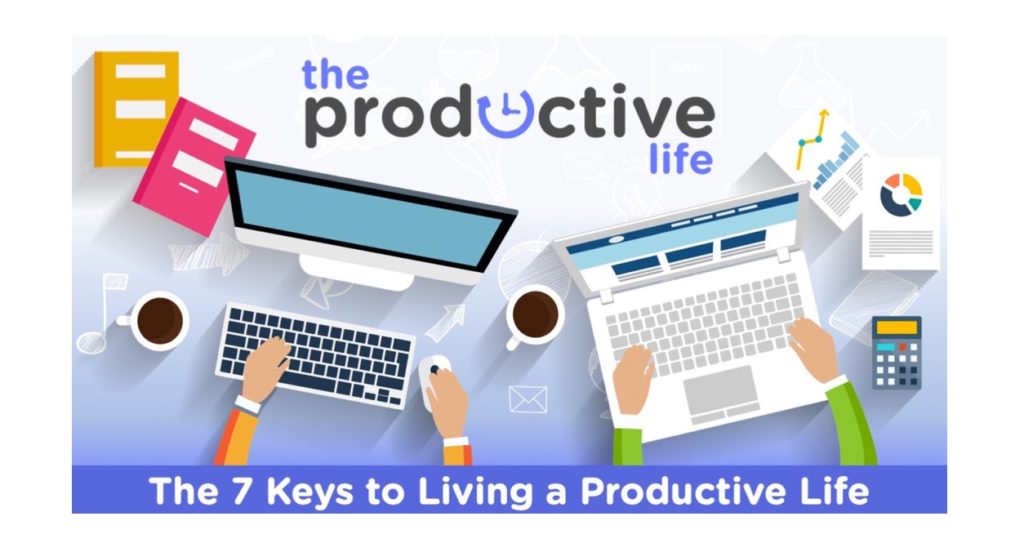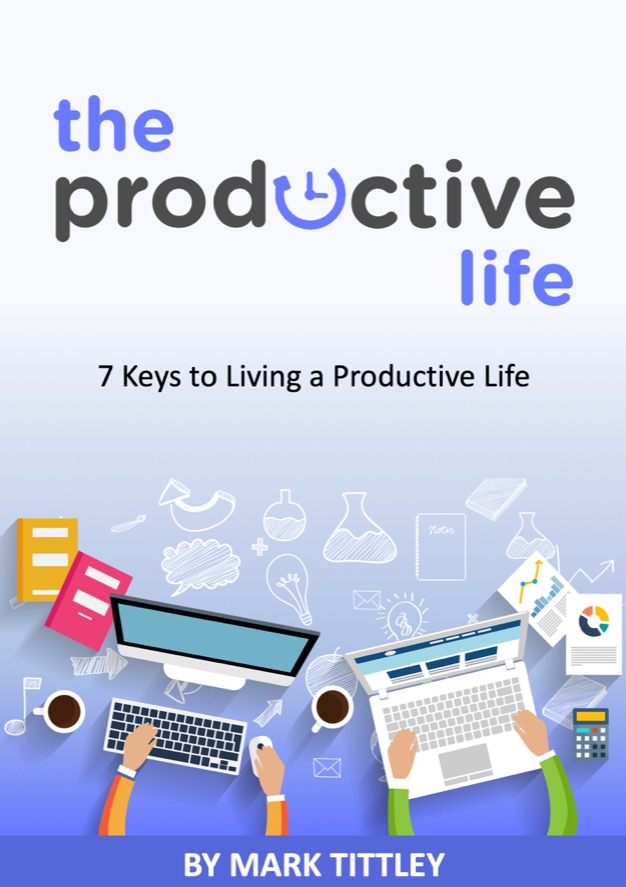Getting Things Done is based around getting clarity about 6 levels of our life. The analogy of a plane on a run way is used. There are runway items – those are our current Actions; then the plane lifts off and move to 10,000 feet where the focus is on current Projects, then we lift to 20,000 fee and consider our areas of Responsibility, then we move to 30,000 feet and we focus on our Goals, then we move to 40,000 feet and we define our Vision, and finally at 50,000 we have the big picture view of our lives – or our purpose and our principles.
David Allen in Making it All Work describes the 6 levels like this:
Runway: Action – Current activities and action steps
10,000 feet: Projects – Tasks expected to take 12 months or less to complete
20,000 feet: Areas of Responsibility – Dfferent “hats” you wear in your life and what’s expected of you in each.
30,000 feet: Goals – Targets for yourself to complete within the next 1 – 3 years.
40,000 feet: Vision – The life you see for yourself within the next 5 – 10 years.
50,000 feet: Purpose & Principles – What you want your life to mean and how you want to be seen by others.
Here is another description of the 6 levels (starting at the top and working down):
50,000 ft is the ‘big picture’ view. Why do you exist? The primary purpose for anything provides the core definition of what its ‘word’ really is. It is the ultimate job description. In other words, your agreements at 50,000 ft. are the description of your life’s purpose. Once your 50,000 ft agreements are clear, you then start determining your agreements at the lower Horizons of Focus:
40,000 ft: Vision. What it will look, sound, feel like with successful implementation of your long term visions. This is a picture of where you want to be 3 to 5 years from now.
30,000 ft: Goals and Objectives. What do you need to accomplish within the next 1 to 2 years to make your vision happen?
20,000 ft: Areas of Focus and Responsibility. Important spheres of work and life to be maintained at standards to “keep engine running”. eg. What is the standard Health you’d like to maintain? How about your standard for your education, family life, spirituality etc. so that you can achieve your 30,000 ft and 40,000 ft goal.
10,000 ft: Projects or Outcomes you want to achieve that require more than one action and which can be completed within a year.
Runway Actions: Next physical, visible actions to take on any project or other outcome.
Trent Hamm who runs The Simple Dollar website posted the following description of the 6 horizons based on David Allen’s book, Making it All Work:
Getting Perspective
Allen looks at six different key elements of getting perspective over one’s situation. Allen’s basic argument here is that perspective helps you clearly distinguish the important from the unimportant and makes the elements of control you have over your time that much more effective.
Getting Perspective on the Runway: Next Actions
Allen starts off at the most basic place: what is your next action? In other words, if you’re sitting there ready to do something, what exactly are you going to do? Some of the time, this choice is very easy – you’ll merely engage whatever fire needs to be put out at the moment – but at other times, the choice is profound. Will you work on that PowerPoint presentation or play catch with your son in the yard? The choice becomes much less clear very quickly, and that’s why it pays to have a higher level of perspective.
Getting Perspective at Ten Thousand Feet: Projects
From the immediate action, Allen steps back a bit to look at projects, which he defines as collections of discrete actions that produce an outcome and can be completed within a year (although usually less). For example, my garden might be a project, or teaching my son how to write his letters. Usually, the projects you have on the table all have an immediate action to offer, but how important is that immediate action? It really depends on the relative importance of the project. Do I define it as more important to work on my son’s Qs or to get those tomatoes in the ground? Personally, I view the writing project as more important and would help my son before heading outside – however, perspective is important here, too. If my son wants to go outside and play in the yard, or if he’s taking a nap, that’s the perfect time for me to grab the trowel and head out back.
Getting Perspective at Twenty Thousand Feet: Areas of Focus and Responsibility
What aspects of my life need regular maintenance? That’s the question at this level – what are your areas of focus? More importantly, what areas take clear priority over the other ones – can you establish a hierarchy? I have several, with my writing and my family clearly on top of the pile. I also see the value of reflecting on this carefully, because if you truly understand the areas of responsibility in life and understand how they rank and relate to one another, it becomes much easier to just automatically prioritize smaller projects and tasks.
Getting Perspective at Thirty Thousand Feet: Goals and Objectives
Beyond your areas of responsibility are your wider goals. What do you want to achieve with your life, particularly in the next two to five years? What will you have accomplished? In many ways, I feel like I accomplished very little for the first twenty seven years of my life. I feel as though I began accomplishing things in the last three years – having children, launching The Simple Dollar, writing a book that’s already begun to turn up in unexpected places. What’s my eventual goal, the one that will probably cover the next few years of my life? I want to push some interesting changes in how people are able to access personal finance education for all ages (something you’ll be hearing about in the future but is already in the works). What Allen is driving at here is how exactly are you going to make your mark on the world? If you don’t know, it’s time to start thinking about it.
Getting Perspective at Forty Thousand Feet: Vision
So what’s beyond your life goals? Allen next moves onto what kind of life those goals, if successful, lead to. Let’s say I achieve every major goal I have set out for the next few years. Where will I be? What will come next? How much further can I reach? Do the goals I have in place for the next two to five years put me in a place that I actually want to be? If so, which of those goals are the most effective at putting me in a good place for the long haul?
Getting Perspective at Fifty Thousand Feet: Purpose and Principles
From there, we zoom out to your whole life. What principles do you live by? What is the purpose of your life? What do you hope to accomplish with your life, and are you actually setting long-term goals to get there? What do you want written as your epitaph?
Read the full Review of Making It All Work at the Simple Dollar website.


